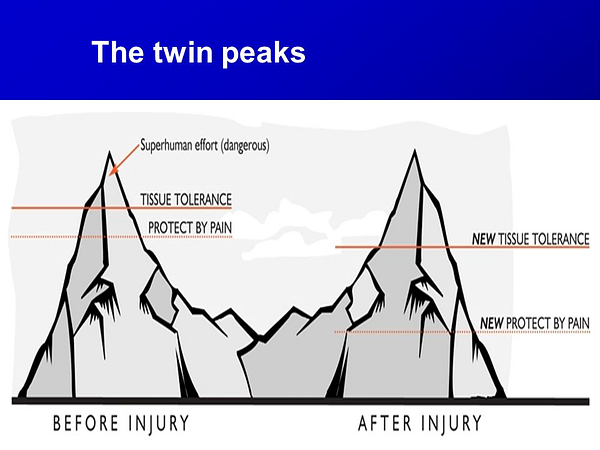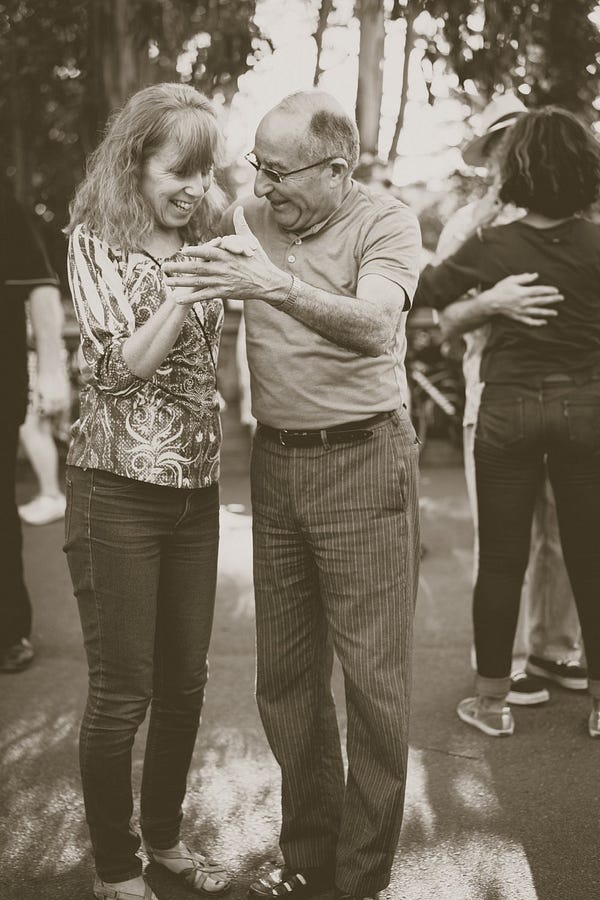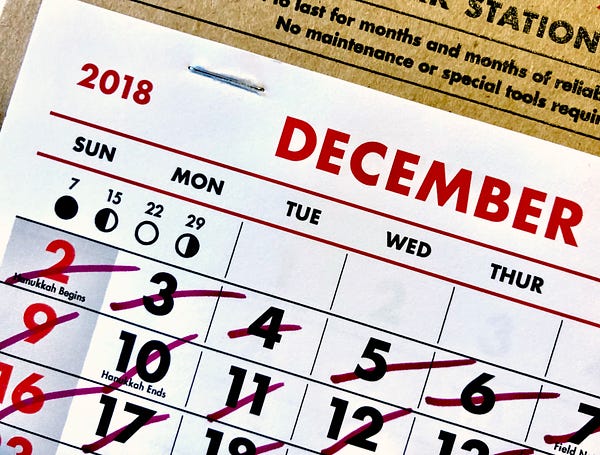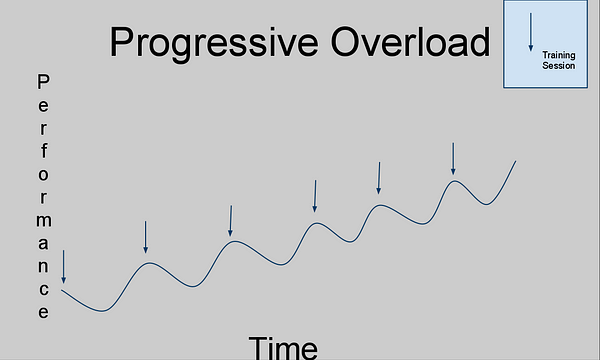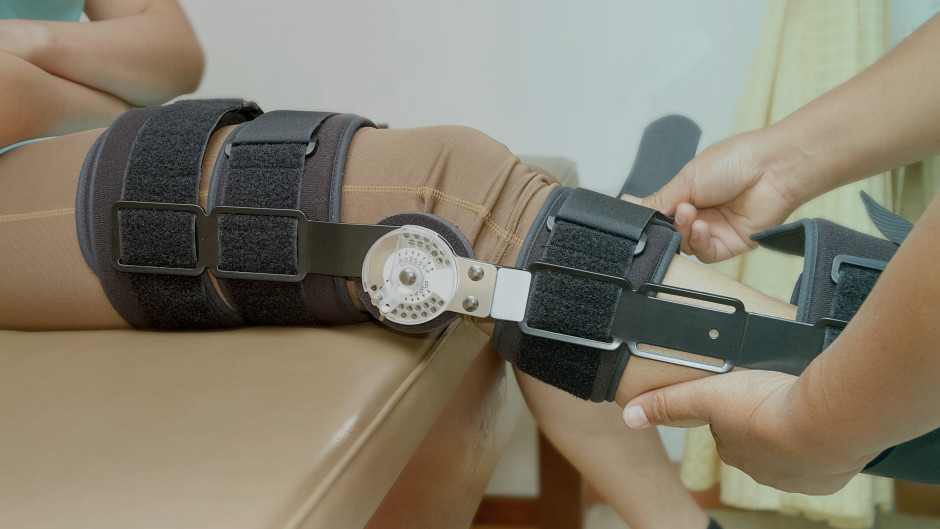Exercising when it hurts
This post is for people who have muscle, joint and/or nerve pain, perhaps in more than one place, that has gone on for a long time and doesn’t seem to be going away. It is meant to help you become more fit and active, so that your body and mind are as healthy and capable as they can be, despite your pain.
Why exercise?
We are always being told about the benefits of exercise. For example, improved cardiovascular health, stronger bones and muscles, lower rates of depression, longer life expectancy, and so on. I prefer to think of the benefits as more individual to each person. Perhaps it means you are able to go to the shops without needing help, pick up your grandchildren without fear, or do a shift at work without feeling exhausted at the end of the day. Exercise increases your capacity to do things that are important to you.
If you want to learn more about exercise, you can subscribe and watch the lectures of exercise experts Eric Hegedus, Paul Lagerman, Ann Gates, Hakon Fotland and Ben Cormack here: Click here
Ask yourself, “what would I do today if I didn’t have my pain”, or, “what did I used to enjoy before my pain came on?”
Will exercise help my pain?
Most people also find their pain decreases with movement and exercise when they find the right thing for them, at the right ‘dose’, and once they manage to get a few weeks of it under their belt. This is not guaranteed though(it depends on a lot of factors). Luckily, all the other benefits of exercise are guaranteed.
Step 1: Ask The Key Question
I encourage everyone to visit a doctor or physiotherapist and ask The Key Question:
“Am I safe to move?”
Usually we ask a medical professional for a diagnosis, medications or advice about the best treatment. It is important that you do that, but I am assuming that people who are reading this post already have, and are still in pain and not where they want to be.
What you want to know from your doctor or physiotherapist is whether you have a condition that means you should avoid exercise and movement. There are really very few of these.
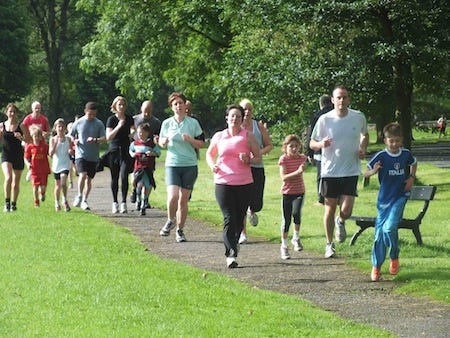
In fact, for most muscle, joint and nerve pain, exercise (done right) is not only safe but strongly recommended by health professionals. This includes joint pain like hip and knee arthritis, and neck and back pain, including spondylosis, sciatica and disc problems.
Step 2: Understand that “hurt doesn’t necessarily equal harm”
For most of our lives, pain is a useful thing that protects our body. If I touch a hot stove, I feel pain and I quickly withdraw my hand. Pain is like an alarm that warns me of danger.
Unfortunately, persistent pain is much less useful. It is almost always well out of proportion to any damage going on in the body, and people can feel terrible pain when moving even when it is not dangerous. The alarm that is usually so useful becomes “over-protective”.
This means that if there is a particular movement you do that causes you pain, and has done for some time, it is very likely that that pain is not indicating you are doing any harm. You are sore, but safe. This is important to understand because otherwise exercise makes no sense and you will just be miserable!
Another way to think of this is like a lowering of the pain threshold. A certain part of the body — or many parts — becomes over-sensitive to movement and feels more painful than it needs to be.
This is why step 1 is seeing your doctor or physio and asking, “Am I safe to move?”. You are asking a medical professional if your pain system is being over-protective.
There are some links at the end of this post that explain this step in more detail.
Step 3: Decide which exercise
The best exercise is one you enjoy, because you’re likely to stick to it. So, think about something you’ve liked in the past or something you’ve always wanted to try. If you’ve never enjoyed exercise and it’s just not your thing, try to recall a time when even if you didn’t like the exercise it at least made you feel a bit better after!
Exercise doesn’t have to be a sport or the gym. For our purposes, exercise is anything that is more demanding than your usual day to day life. For some people, this could be walking, gardening, dancing, lifting and carrying... At the end of the post, I have put a list of different exercises that you might want to start with.
Avoid the trap of choosing something you think you “should” do. If you have back pain, you don’t have to do pilates. That will help, but it will help because it’s exercise, not because it’s pilates. If you have knee pain, don’t think you have to do exercise in the swimming pool.
Make sure there is going to be as little “resistance” as possible to your choice. If you choose to go swimming regularly with a friend but the pool is a long drive away, only open for free swim at awkward times and your friend is very busy and likely to cancel, you might be setting yourself up for failure. On the other hand, if the pool is near your house, affordable, and your friend is reliable, that would be a perfect situation. So, try to choose something that will fit in as easily as possible with your existing routine.
Step 4: Get started and get into the swing of it
When you have decided what you want to do, decide when you want to do it. Aim for three or four times per week. More than that is okay if the exercise is quite easy. But if you are working hard it is often best to give your body a day off in between workouts so it has time to recover and adapt.
When you know what you want to do and when you want to do it, do it! And for now, don’t worry about anything more than doing it. The details don’t matter, we are just keeping it simple at this stage. The key is to “just show up” — at the gym, in the park, in front of your TV with an exercise DVD on.
Explore the movements involved in whatever you are doing. Get used to how your body feels, see how it reacts, see how your pain reacts. Enjoy moving your body again. Don’t feel you have to work yourself to exhaustion.
If you miss a workout, don’t beat yourself up. There is no value to doing this. Just try again next time.
What about the pain? The golden rule
On the one hand, we know that pain is like an “over-sensitive alarm” and doesn’t mean you are doing damage, so you don’t need to avoid pain. And, some pain or at least discomfort might be necessary to get a good workout. But, of course you don’t want too much pain because pain can be horrible. Especially if it is the kind of pain that ‘flares up’ after exercise and stops you from working and sleeping properly.
To solve this, I recommend sticking to the golden rule of exercise and pain. The golden rule is this:
Exercise within tolerable pain, that plateaus during exercise and does not continue to rise significantly, and gradually decreases once you have finished.
“Tolerable pain” is a funny phrase. This is very individual. For some it will be a mild discomfort, for others it will be more. Another way of thinking of tolerable pain is something you can cope with and feel is manageable. It should not feel frightening and you should feel in control.
It will take some trial and error to find this level. At first, you might do too much and flare up your pain. Take time to let it ease off then try again, doing a little less. Think of a flare up as a learning process — you now know what is “too much” for you. As you continue to exercise, it is likely that what was once too much will become achievable.
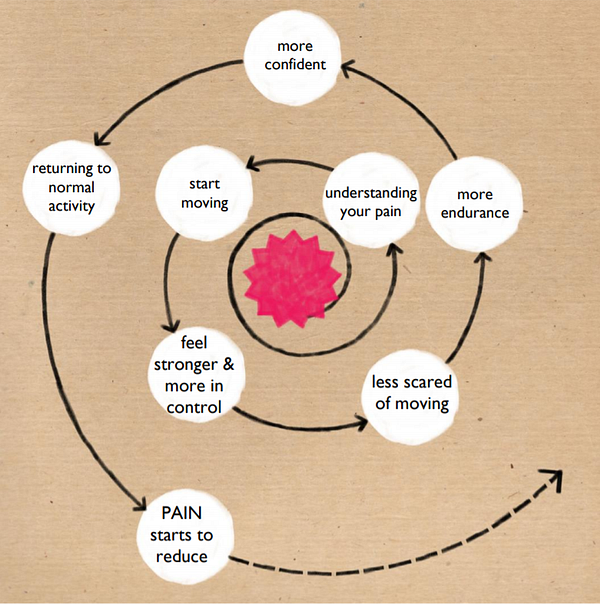
Be ready for DOMS!
Everyone, regardless of whether they have a painful condition, is likely to feel sore the next day or two after trying something new. This is called DOMS — Delayed Onset Muscle Soreness. So, if you do feel worse after your first session or two, consider that this might not be a flare up of ‘your’ pain but normal muscle soreness that will diminish over time.
Step 5: pushing on for maximum benefit
Once you have had a few weeks in a row of “showing up” and doing your exercises, no matter how little, and you have worked out the Golden Rule, it is time to start pushing on to get the most benefit from your time and effort that you can.
Once you are in the habit of exercise, you might find that you end up doing the same thing each time. For example, walking the same route, lifting the same weights, dancing along to the same DVDs. Unfortunately, the body quickly adapts to this and you will stop getting as much benefit. You are ‘maintaining’ things, but not getting fitter. To get the most from exercise, you have to keep moving out of your “comfort zone”, a little bit at a time.
To make sure you are doing this, it helps to keep track of what you are doing. Then, you can make sure you progress over time. For example, try to walk a bit further, or do the same distance in a shorter time. If you are doing home exercise or weights at the gym, try to do a few more “repetitions” or lift heavier weights. There are some tools to help this at the end of the post.
As you start to build the exercise habit, this becomes key. Earlier, I said the best exercise is one that you enjoy, because you will stick to it. This is true, but it is also true that part of your exercise should be quite hard. Not all of it, but maybe just the last few minutes or the last couple of repetitions. A good rule of thumb is:
“What doesn’t challenge you, won’t change you”.
Give yourself some tough love. Are you out of breath? Sweating? Are your muscles tired? If not, you may not be getting the benefit you want.
Another benefit of keeping track of what you are doing is that it helps you to follow your exercise programme based on what you plan to do that day, rather than based on your pain. Allowing your pain to ‘dictate’ what you do often leads back into the spiral of doing less and less.
Step 6 and beyond: becoming an exercise expert
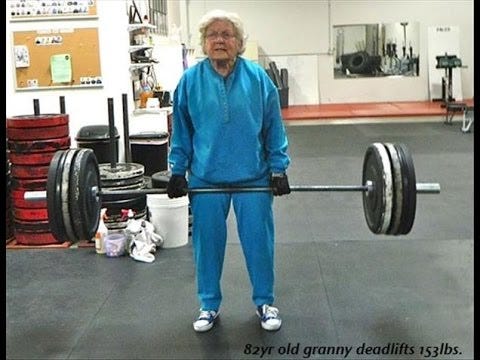
Once you are in (or back in) the world of exercise, your confidence will be higher and it is time to try new things. For example, if you mostly do things like walking and swimming, you would benefit from adding in some strength training — shorter, high intensity movements often using weights. It is good to have a variety of endurance, strengthening and mobility exercises, if you can.
It might also be a good idea flip the “best exercise is the one you enjoy” rule and actively try things that you are worried about. If you are worried about something it is likely a weakness of yours that you might benefit from confronting. You might surprise yourself!
That concludes my six step guide to exercising when it hurts. It can be a tough road, with setbacks along the way, but always worth it!
Thank you to Tina, Chris and Bernadette for their advice on this post!
Links and extra stuff
Step 1: ask The Key Question
The National Institute for Health and Care Excellence recommends that exercise is one of the most important things to do if you have persistent back pain, osteoarthritis, and a host of other painful conditions. This podcast is aimed at medical professionals, about the question “Am I safe to move?”.
Once you have spoken to your physiotherapist to ask if you are safe to move, you might want to ask them to support and advise you through your exercise journey, too. They will be happy to help you with the process — that’s our job! Don’t feel like you need a physio though. As long as you have medical approval, a personal trainer or fitness instructor would be a great idea too.
Step 2: Understand that “hurt doesn’t equal harm”
I recommend taking some time on this step to let it sink in, because it can really change your outlook on exercise and make it less concerning. Try the following resources: Tame the Beast, Pain Health, Understanding Pain Booklet.
Step 3: Decide which exercise
Here is a list of suggestions for exercise. Please don’t feel limited to these!
- Walking
- Running, for example Couch to 5k or Parkrun
- Cycling or an exercise bike
- Lifting weights at the gym
- Walking up and down the stairs
- Carrying heavy bags
- Racquet sports
- Dance classes
- Gardening
- Home stretches or yoga
- Exercise class at your local health centre
- Rock climbing
- Escape Pain app or local class
- Youtube/DVD workouts, or NHS fitness studio
- Youtube/DVD dance tutorials
- High intensity interval training
- Home strength exercises
For more tips about approaching exercise I recommend this great list of “common sense exercise and movement guidelines”.
Step 4: Get started and get in the swing of it!
The ‘golden rule’ of exercise with pain is based on a large base of scientific research that shows it is better than the alternatives — that is, avoiding pain, or pushing through the pain while it gets worse an worse. If you are interested in this, I recommend the following research reviews: Exercise for chronic musculoskeletal pain, Physical exercise as a non-pharmacological treatment of chronic pain, Exercise, not to exercise, or how to exercise in patients
with chronic pain? applying science to practice, Dysfunctional endogenous analgesia during exercise in patients with chronic pain: to
exercise or not to exercise?
Step 5: pushing on for maximum benefit
There are a number of tools you can use to do this. This worksheet from Keele University helps you to keep track of exercise according to the amount of time you spend on it. For example, if you are dancing, you can plot your dancing for the week by the number of minutes you are doing it. Or if you are walking, you can plot how many times you walk round the block. For continuous activities liking walking, dancing, circuit training, running and so on, it is sometimes helpful to use a “rate of perceived exertion” tracker. Decide which ‘zone’ you want to be in based on your experience and keep it to hand to make sure you are not ‘slacking off’ or doing too much.
For things like lifting weights or doing bodyweight movements, this exercise diary is good for keeping track of sets and reps. Here is an instructional video on how to fill it out.
Here you can find the original article HERE:
You can follow Tom on Twitter: @Thomas_Jesson
If you want to learn more about exercise, you can subscribe and watch the lectures of exercise experts Eric Hegedus, Paul Lagerman, Ann Gates, Hakon Fotland and Ben Cormack here: Click here
Get 20% off for the yearly membership with the discount code: EASTER2022


